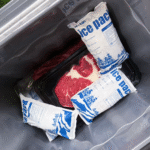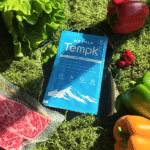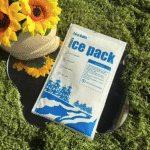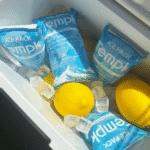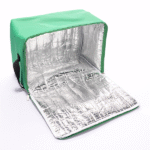Cold chain custody is not just a buzzword – it’s the heartbeat of temperature controlled logistics. En 2025, the cold chain logistics market is projected to expand from Dólar estadounidense 436 mil millones en 2025 to more than Dólar estadounidense 1.3 billones por 2034, fuelled by automation, sensores en tiempo real, artificial intelligence and sustainable packaging. Whether you’re shipping freshly harvested berries, life saving biologics or designer ice cream, maintaining custody over temperature conditions is crucial to prevent spoilage, meet tightening regulations and protect your reputation. This guide will demystify cold chain custody, reveal the latest innovations and trends, and arm you with practical tips to safeguard your perishable cargo. It includes fresh statistics and insights from 2024–2025 to ensure you’re up to date.
Understand what cold chain custody means and why it matters for safety and compliance.
Identify the key components of an effective custody process, from pre loading protocols to chain of custody documentation.
Explore cutting edge technologies such as IoT sensors, AI driven analytics and blockchain that are transforming cold chain logistics.
Manténgase por delante de 2025 tendencias like low GWP refrigerants, sustainable packaging and last mile innovations.
Implement actionable strategies para reducir el desperdicio, ensure compliance and delight customers.
What is cold chain custody and why does it matter in 2025?
Cold chain custody refers to the documented process that keeps temperature sensitive goods within safe temperature ranges from the point of origin to the final customer. It ensures continuous refrigeration, proper handling and verification at every hand off. En la práctica, this means verifying that reefer units are set to the correct temperature, tracking environmental conditions during transit and recording every custody transfer for audit purposes.
Understanding the stakes
Temperature excursions are costly. The International Institute of Refrigeration estimates that roughly 20 % of global food is lost due to inadequate temperature control. En la industria farmacéutica, temperature excursions affect around 30 % of temperature sensitive products, leading to degradation, regulatory investigations and damaged trust. Biológicos, such as gene therapies and mRNA vaccines, demand stringent temperature ranges – even minor shifts outside +2 °C a +8 °C or ultra low thresholds –20 °C a –80 °C can render products unusable. These losses are not only financial; they compromise patient safety, exacerbate food insecurity and undermine sustainability goals.
How cold chain custody protects product integrity
To prevent excursions, companies employ a variety of strategies:
| Custody element | Descripción | Por que importa |
| Pre loading protocols | Reefer units are pre cooled, and their temperatures are matched to the cooling orders on the bill of lading. Drivers verify settings before loading and keep reefer units on continuous mode. | Ensures products start their journey within safe ranges and reduces early spoilage risks. |
| Monitoreo continuo | IoT sensors embedded in pallets, shipping containers or packaging provide real time temperature, datos de humedad y ubicación. Modern systems send immediate alerts if readings drift outside of predefined ranges. | Real time visibility allows logistics teams to intervene before damage occurs and provides a digital audit trail for regulators. |
| Chain of custody documentation | Every hand off is recorded, from loading to transit to unloading, using digital forms or blockchain backed ledgers. | Provides a tamper proof record that supports investigations, recalls and compliance with regulations like FSMA and EU GDP. |
| Registradores de temperatura | Reutilizable, paper thin loggers adhere to shipments and capture environmental data throughout transit. They automatically notify shippers of excursions and store data in the cloud. | Offer cost effective visibility and reduce reliance on manual temperature checks. |
Common pitfalls and limitations
Manual cold chain custody processes often rely on drivers to scribble down reefer temperatures every few hours. This approach is prone to human error, delays and incomplete records. Equipment failures or mechanical issues can occur unnoticed between manual checks, llevando al deterioro. Además, cargo can be damaged during loading or unloading without being detected until the product is rejected. Modern solutions, such as cloud enabled temperature loggers and IoT sensors, address these challenges by capturing and storing data automatically and alerting shippers in real time.
How do you implement effective cold chain custody processes?
An effective cold chain custody system combines rigorous procedures with smart technologies. Below is a step by step framework to help you design or upgrade your process.
1. Map your products and temperature profiles
Diferentes productos requieren diferentes rangos de temperatura. Fresh produce typically needs 0–5 ºC, productos lácteos 1–3 ºC, vacunas 2–8 ° C y alimentos congelados below –18 °C. Identify the safe ranges for each product and document them in your standard operating procedures (Sops).
2. Standardize pre loading checks
Ensure that reefer units are calibrated and pre cooled to the correct temperature. Drivers should verify settings and sign off before loading. Use checklists to confirm that packaging is intact and that temperature loggers or sensors are activated.
3. Implement real time monitoring and alerts
Equip shipments with IoT sensors that measure temperature, humedad, light exposure and shock. Integrate these sensors with cloud dashboards that display location and environmental data in real time. Set thresholds for excursions and configure automated alerts to notify logistics managers when deviations occur.
4. Use AI for route optimization and predictive risk management
Artificial intelligence engines analyze traffic, weather and delivery schedules to find the most efficient route while balancing cost and product safety. Predictive analytics evaluate historical shipment data to anticipate potential issues, such as equipment malfunctions or delays. They can recommend rerouting during heat waves or storms to minimize risk.
5. Digitize chain of custody records
Replace paper forms with electronic documentation. Blockchain platforms create immutable records of each custody transfer, temperature reading and quality event. Smart contracts can automate payments or notifications when predefined conditions are met. Digitizing documentation reduces the risk of errors and accelerates audits.
6. Incorporate energy efficient practices and sustainability
The push for low GWP refrigerants, solar powered refrigeration units and hybrid diesel electric systems is driving greener cold chains. Solar powered cold storage provides reliable cooling while reducing energy costs. Ligero, reusable containers and biodegradable insulation panels minimize waste. Energy monitoring tools measure consumption and recommend optimizations, reducing carbon footprint and operating expenses.
7. Train staff and align with regulations
Educate drivers, warehouse personnel and carriers on proper handling, temperature verification and emergency protocols. Regularly calibrate equipment and maintain compliance with local and international regulations (FDA, OMS, FSMA, PIB). Keep up to date with changing regulatory requirements and implement digital systems to facilitate compliance.
What technologies drive cold chain custody in 2025?
The cold chain industry is undergoing a technological revolution. Integrating sensors, análisis de datos, cloud platforms and decentralized ledgers transforms static, reactive processes into proactive, intelligent systems. Here’s a look at the key technologies and how they benefit you.
Sensores IoT y monitoreo en tiempo real
Internet of Things devices are the backbone of modern custody. Embedded sensors measure temperature, humedad, light exposure, shock and GPS coordinates. They transmit data in real time via cellular, satellite or low power wide area networks. Los beneficios incluyen:
Continuous visibility – Real time dashboards show shipment conditions throughout transport.
Immediate intervention – Alerts trigger corrective action as soon as excursions begin.
Análisis predictivo – Machine learning models analyze sensor data and past shipments to predict future excursions, enabling proactive risk mitigation.
Sin embargo, adoption can be slowed by cybersecurity concerns, lack of universal standards and connectivity gaps in certain regions. Investing in secure networks and standard protocols is essential.
AI driven analytics and route optimization
Artificial intelligence is already redefining cold chain operations. AI analyzes traffic congestion, weather forecasts and consumption patterns to optimize routes. En el sector farmacéutico, machine learning models predict temperature excursions based on route characteristics, carrier performance and climate patterns. Digital twin simulations allow logistics planners to test different scenarios virtually, evaluating the impact of new distribution centers or route changes before implementation.
Using AI transforms cold chain management from reactive problem solving to proactive risk management. It reduces fuel consumption, minimizes transit time and improves delivery reliability, ultimately protecting product quality and reducing costs.
Blockchain and smart contracts for traceability
Blockchain technology provides a decentralized, tamper proof ledger that records every temperature measurement, custody transfer and quality event. Smart contracts automate workflows: Por ejemplo, a payment is released only if a shipment’s temperature stays within defined thresholds. Los beneficios incluyen:
Registros inmutables – Once data is written, it cannot be altered, ensuring accuracy and accountability.
Enhanced transparency – Authorized stakeholders can view product history from origin to destination.
Reduced fraud and counterfeiting – Blockchain helps combat counterfeit pharmaceuticals; arriba a 10 % of drugs in developing countries are counterfeit, and traceability improves authenticity.
Audit efficiency – Digital ledgers simplify recall investigations and regulatory audits, reducing administrative burden.
Blockchain adoption is still emerging, but pilot programs show strong potential. Walmart’s blockchain implementation reduced mango traceability times from weeks to seconds.
Smart packaging and insulated materials
Packaging is the first line of defense. Innovations include multi layer insulation, Materiales de cambio de fase (PCM) and vacuum insulated panels that maintain temperature stability. Smart packaging integrates NFC chips or temperature indicators, allowing handlers to verify conditions using mobile devices. Reusable containers and biodegradable liners reduce waste and align with sustainability goals.
Compliance and audit management software
El cumplimiento normativo no es negociable. Software platforms automatically capture data from sensors, GPS units and warehouse systems, generating digital audit trails for agencies like the FDA, EMA and USDA. These tools flag non conformities and maintain electronic records, making audits faster and more reliable. When integrated with blockchain, they provide end to end proof of compliance.
Energy and sustainability management systems
Cold chain logistics consume significant energy. To meet profitability and environmental goals, companies deploy energy monitoring tools that track consumption across refrigeration units and facilities. AI algorithms suggest optimization measures, such as adjusting compressor schedules or using solar panels during peak demand. By reducing energy use, businesses lower costs and comply with environmental regulations, strengthening their brand image.
How do trends and regulations shape cold chain custody in 2025?
Cold chain custody doesn’t exist in a vacuum; it’s influenced by market forces, consumer expectations and evolving legislation.
Sustainability and low emission refrigeration
Governments worldwide are pushing for greener operations. Policies encourage the transition to refrigerantes de bajo GWP and energy saving reefer units. Companies are adopting solar powered cold storage and hybrid diesel electric systems to cut emissions and operating costs. En algunas regiones, solar units offer competitive electricity rates of 3.2–15,5 céntimos por kWh, making them financially attractive. Eco friendly packaging – such as biodegradable liners and recycled insulation panels – is replacing single use materials, and reusable shipping containers are gaining popularity for extended rotations.
Market growth and industry expansion
The cold chain industry is expanding rapidly. MarketsandMarkets projects the global cold chain industry will grow from USD 228.3 mil millones en 2024 a USD 372.0 mil millones por 2029, a CAGR de 10.3 %. Real time monitoring solutions will grow from Dólar estadounidense 15.35 mil millones en 2024 a USD 116.8 mil millones por 2034, with North America holding 35.4 % del 2024 cuota de mercado. The cold chain tracking and monitoring devices market is expected to reach Dólar estadounidense 8.846 mil millones en 2025. These surges are driven by rising demand for temperature sensitive foods, expansion in e commerce and the growth of pharmaceuticals and biologics. In India, high dairy consumption (427 g per capita) and a booming quick service restaurant sector (20–25 % growth in FY 2024) underscore the need for reliable cold chain logistics.
Regulatory requirements and consumer expectations
Regulators are tightening oversight. En los Estados Unidos, the Food Safety Modernization Act (FSMA) and FSMA Rule 204 mandate traceability for high risk foods. European Good Distribution Practice (PIB) guidelines require continuous temperature monitoring for pharmaceuticals. Consumer awareness of freshness, sustainability and ethical sourcing is rising. Shoppers want proof that their food is safe and their pharmaceuticals are authentic. Transparent, traceable cold chains build trust and differentiate brands.
Industry innovations and last mile delivery
Last mile delivery is evolving to meet e commerce demand. Electric and hybrid vans with compact refrigeration units, micro warehouses and flexible scheduling options are making same hour deliveries possible. IoT enabled tracking links carriers, warehouses and customers in real time. Artificial intelligence further optimizes these final legs by analyzing traffic and weather to select the fastest routes. Blockchain and smart contracts automate payment and compliance for these high velocity deliveries.
Practical tips and expert advice
Implementing cold chain custody can seem overwhelming, but the following tips help you prioritize actions and achieve quick wins.
Optimize for specific scenarios
Fresh produce shipments: Pre cool produce before loading and use vacuum insulated containers. Activate IoT sensors that transmit data every few minutes. If you detect a temperature rise, coordinate with your carrier to adjust settings immediately.
Pharmaceutical and biologics logistics: Deploy multi parameter sensors (temperatura, humedad, luz, vibración) to monitor sensitive cell therapies. Use predictive analytics to choose low risk routes and maintain chain of custody records that satisfy FDA 21 Parte CFR 11 and EU GDP requirements.
Last mile grocery delivery: Invest in electric vans with multi zone refrigeration and coordinate deliveries through AI driven dispatch systems. Share real time tracking with customers to boost transparency and satisfaction.
Iniciativas de sostenibilidad: Swap chemical refrigerants for low GWP alternatives. Choose biodegradable liners and reusable containers to cut waste and appeal to eco conscious consumers.
Risk management: Use blockchain to document chain of custody events. Smart contracts can hold payments if a shipment’s temperature goes out of range, ensuring accountability and protecting your margins.
Ejemplo del mundo real: A European dairy exporter integrated IoT sensors with AI route optimization. During a summer heatwave, predictive analytics identified high risk routes. The system rerouted shipments through cooler regions and alerted carriers to pre cool reefers. Como resultado, spoilage dropped by 25 %, and customer complaints fell significantly.
2025 latest cold chain custody developments and trends
Descripción general de la tendencia
The cold chain landscape is changing quickly. Market analysts expect the global cold chain logistics market to expand from Dólar estadounidense 436 mil millones en 2025 to over Dólar estadounidense 1.3 billones por 2034, fuelled by automation, sensores en tiempo real, IA y envases sostenibles. Government initiatives and private investment in the Middle East are building tech driven logistics hubs with IoT, IA y cadena de bloques. Stricter temperature control standards and traceability requirements accelerate adoption.
Último progreso de un vistazo
Optimización de rutas impulsada por IA – AI algorithms analyze traffic, weather and consumption patterns to reduce delays and energy use.
Blockchain para una trazabilidad de extremo a extremo – Pilot programs synchronize customs data and reduce clearance times.
Almacenamiento en frío con energía solar – Solar units provide reliable cooling at lower operating costs.
Congeladores criogénicos portátiles – New cryo units maintain temperatures as low as –80 °C to –150 °C for gene therapies.
Embalaje sostenible – Recyclable insulated containers and biodegradable wraps reduce plastic waste.
Dispositivos de conectividad híbrida – Sensors switch seamlessly between cellular, satellite and Wi Fi to maintain data flow.
Adopción de análisis predictivo – Growing use of AI and machine learning to predict issues and optimize logistics.
Insight del mercado
Real time monitoring solutions are projected to reach Dólar estadounidense 116.8 mil millones por 2034, creciendo a una tasa compuesta 22.5 %. North America leads with 35.4 % del 2024 market due to advanced logistics infrastructure and stringent regulations. Mientras tanto, the cold chain tracking and monitoring devices market is expected to be worth Dólar estadounidense 8.846 mil millones en 2025, creciendo en un 10.3 % CAGR a través de 2033. Food loss due to inadequate cold storage remains a pressing issue – up to 20 % of global food is wasted, and in India up to 40 % of horticultural produce is lost. Investments in tracking systems reduce these losses and provide environmental and economic benefits.
Preguntas frecuentes
q: What’s the difference between cold chain custody and cold chain monitoring?
A: Monitoring focuses on recording temperature and humidity data; custody adds real time location and hand off tracking. Monitoring devices often store data locally for later retrieval, while custody solutions integrate GPS and connectivity to provide continuous visibility and enable immediate intervention.
q: ¿Con qué frecuencia deben transmitir datos los dispositivos de seguimiento de la cadena de frío??
A: Transmission frequency depends on product sensitivity and risk tolerance. Los productos altamente sensibles como las vacunas pueden requerir actualizaciones cada pocos minutos, whereas frozen foods can be checked every 30 minutos. AI can adjust intervals dynamically to balance battery life and visibility.
q: Can blockchain prevent cold chain fraud?
A: Sí. Blockchain’s immutable ledger records every custody transfer and environmental reading, deterring fraud and making it easier to trace issues to their source. Smart contracts automate enforcement of quality conditions and payments.
q: ¿Cuál es la diferencia entre el seguimiento por GPS y el seguimiento por RFID??
A: GPS provides continuous location data, ideal for long haul shipments and high value goods. Las etiquetas RFID ofrecen identificación de corto alcance y pueden registrar datos ambientales cuando se escanean; they’re useful for pallet level visibility in warehouses.
q: ¿Cómo pueden las pequeñas empresas permitirse el seguimiento de la cadena de frío??
A: Empezar poco a poco. Use affordable data loggers and Bluetooth Low Energy (BLE) sensors on critical products or routes. Subscription based services and partnerships with logistics providers can provide tracking as part of their service. Government grants or incentives may also offset costs.
Resumen y recomendaciones
Cold chain custody is essential for protecting temperature sensitive goods and meeting stringent regulatory requirements. Las conclusiones clave incluyen:
Understand your products and temperature needs – Document safe ranges and design processes accordingly.
Aprovechar la tecnología – IoT sensors, AI analytics and blockchain provide real time visibility, predictive insights and tamper proof records, reducing waste and improving quality.
Adopte la sostenibilidad – Adopt low GWP refrigerants, solar power and reusable packaging to lower carbon footprints and meet consumer expectations.
Digitize chain of custody records – Replace manual logs with digital platforms that simplify audits and enhance compliance.
Train your people – Align staff with SOPs, regulatory requirements and emergency protocols. A knowledgeable workforce complements technology.
By integrating these strategies, companies can reduce spoilage, meet regulatory demands and satisfy increasingly discerning consumers.
Plan de acción
Realizar un análisis de brechas of your existing cold chain processes; identify weak points and prioritize improvements.
Pilot smart devices on a small scale to test sensors, trackers and blockchain platforms before a full rollout.
Asegure sus datos – Implement encryption, multi factor authentication and regular security audits to protect sensitive information.
Invierta en análisis predictivo to forecast demand, anticipar fallas en los equipos y optimizar rutas.
Adoptar prácticas sostenibles – Evaluate solar refrigeration, recyclable packaging and energy efficient operations.
Engage with a trusted partner – Work with providers experienced in cold chain technology and compliance to design a tailored solution.
Acerca de Tempk
Tempk es pionero en soluciones de cadena de frío. Diseñamos y fabricamos dispositivos de seguimiento avanzados., Embalajes aislados y sistemas logísticos de temperatura controlada.. Our research and development team integrates IoT sensors, GPS tracking and blockchain into our products to deliver accurate, reliable and sustainable solutions. By partnering with food, industrias farmacéuticas y químicas, we help businesses maintain product integrity, reduce waste and comply with strict regulations.
Llamado a la acción: Contact our specialists to discuss your cold chain custody needs. We can help you design a solution that combines real time visibility, Análisis predictivo y prácticas sostenibles para proteger sus productos y deleitar a sus clientes..
















